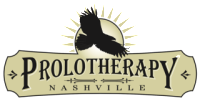PROLOTHERAPY & PRP RESULTS
RESULTS MATTER…AND CORRECT UNDERSTANDING PRODUCES BETTER RESULTS: HERE ARE SOME OF OUR RESULTS.
Why am I so confident of this fact? Because if I have completely remedied a patient’s problem, I know what structures were, and were not, the source of their symptoms, and I know that strengthening their connective tissue structures resulted, not only in relieving their symptoms, but in reducing or eliminating further joint damage. I have seen over 4200 patients, roughly 18% of whom have one or both knees treated.  Around 40% of our knee patients have been told that they need a knee replacement, and another 10% have been told that they need an arthroscopic procedure. So I have treated roughly 1000 knees to date (2015), and over 400 of them were told that they were candidates for operation. I am aware of less than 20 patients who have gone on to have surgery of any kind following Prolotherapy treatment. You can do the math on how many operations we have allowed patients to ‘avoid’…and this is just the figures in knees. There are also necks, shoulders, elbows, wrists, hands, low backs, hips, ankles, and feet where our patients have frequently had operative therapy offered, or in whom operations have already been performed, but pain persists. Across the scope of issues that we treat, we have an around 90% rate of 80% + pain and symptom reduction, and around 50% rate of 100% relief of symptoms.
Around 40% of our knee patients have been told that they need a knee replacement, and another 10% have been told that they need an arthroscopic procedure. So I have treated roughly 1000 knees to date (2015), and over 400 of them were told that they were candidates for operation. I am aware of less than 20 patients who have gone on to have surgery of any kind following Prolotherapy treatment. You can do the math on how many operations we have allowed patients to ‘avoid’…and this is just the figures in knees. There are also necks, shoulders, elbows, wrists, hands, low backs, hips, ankles, and feet where our patients have frequently had operative therapy offered, or in whom operations have already been performed, but pain persists. Across the scope of issues that we treat, we have an around 90% rate of 80% + pain and symptom reduction, and around 50% rate of 100% relief of symptoms.
After studying knee treatment results in our own practice, I was asked to present my results in a meeting of a national physician organization, and to contrast these with research results obtained using ‘typical’ Orthopedic Surgery approaches (using Platelet Rich Plasma, a strong ‘healing trigger’ that was applied to structures based on Orthopedic diagnostic assumptions—attacking the ‘loss of cartilage’ only), and to results obtained by other Prolotherapists.
MY KNEE RESULTS vs. ORTHOPEDIC AND OTHER PROLOTHERAPY RESULTS
From my practice, 55 knees were evaluated over a year following last treatment. The results that we obtained, for those completing a course of treatment, were: for 80% or more symptom improvement—95%. For 100% symptom relief—45%. (again, half of these people were offered operations by Orthopedic Surgeons prior to seeing me, so this is a fairly ‘severe’ group of knee problems that were treated). My average number of treatments needed to obtain these results was slightly under five treatments. The two research studies with which we compared these results: Kon et.al., 2011 (an Orthopedic Surgeon), who used PRP in 50 knees, three treatments, who obtained 40% average symptom reduction, and Patterson and Rabago, 2013, (Prolotherapists) who treated 50 knees with up to 5 treatments, and who obtained an average 50% symptom reduction, with a maximum symptom reduction of 65%. Do my results justify my confidence in my ability to correctly diagnose, and to successfully treat, these problems? And, do we see how different ‘understandings’ of the problem produces different approaches, which produce different results?

